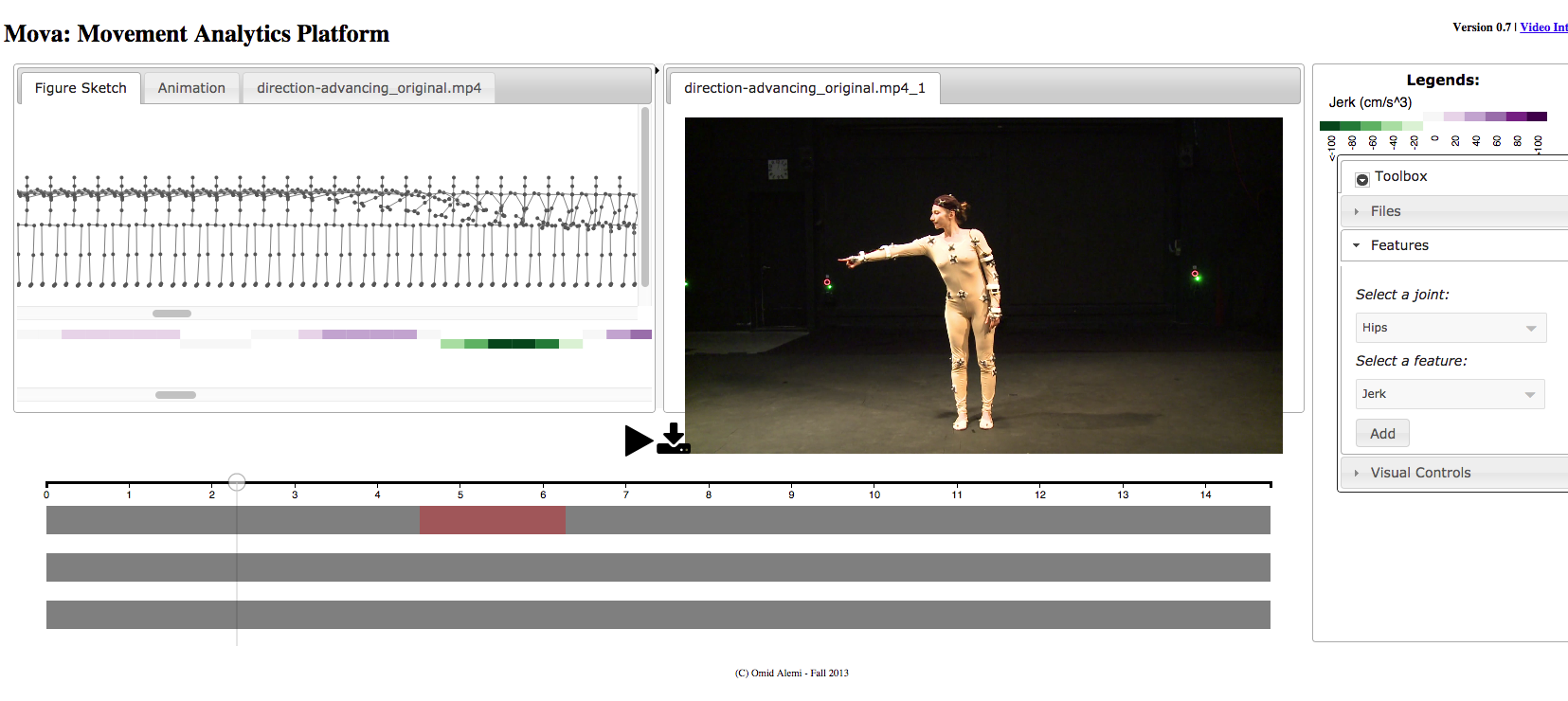Collaboration with : Omid Alemi, Ankit Gupta, Thecla Schiphorst and Philippe Pasquier, Shannon Cuykendal, Kristin Carlson, Jeewon Lee (SIAT – SFU), Karen Studd, Karen Bradley (LIMS)
In a first step of this research project, we investigated the value and challenges of observing movement experience in embodied design. We interviewed three design researchers selected from a CHI2014 panel on designing for the experiential body. For each designer, we analyzed a publication describing their process of observing movement experience. By analyzing the interviews and publications, we studied how these researchers observe movement and how they articulate it in their design process. From our study, we contribute a set of techniques for performing movement observation inspired by somatics and bodybased practices which we define as: attunement, attention, and kinesthetic empathy. We illustrate how these techniques have been applied by the selected researchers, and also highlight the remaining challenges related to articulating, translating, and sharing the felt movement experience in the context of design within HCI. Finally, we address these challenges by arguing for further exploration of movement frameworks from the fields of somatics, body-based practices, and movement studies as specific strategies that can be applied to HCI.
In a second step, we designed an annotation tool called MOTATE that is meant to gather Laban Movement Analysis expert annotation of motion data. We developed a first version of MOTATE for the reliability study that allowed participants to select appropriate annotation of movement excerpts observed in pairs of videos, prioritizing dominant features. MOTATE provides an online annotation tool that allows users to view movement data recorded using various sensors from different perspectives and annotate the data according to Laban analytical framework. When accessing MOTATE, the user selects the data to annotate as well as the nature of the display; MOTATE allows selecting two displays. Each can accommodate the variety of motion data that the movement database carries, including motion capture, physiological data, and video recordings. For example, user can choose to view the data via two video displays if the movement was video recorded from different perspectives. MOTATE provides various video play functionality (e.g. scrubbing through a time-line). Once the user plays the data, she can annotate the data in the Laban analytical framework and save the annotation into a database directly. In order to annotate the data, the user needs to select segments of movement on three different tracks. The annotation tracks are ranked based on the perceived dominance of the observed movement element. Segments of movement selected cannot overlap in the same annotation track but can overlap across the three annotation tracks.
In a third step, we built Motif Tiles, a set of scrabble-like tiles with Motif movement notation symbols developed to analyse human movement with the help of physical objects. These tangible tiles allow for analyzing and writing temporal patterns of human actions. We collaborated with Certified Laban Movement Analyst to use the Motif Tiles in dance and movement workshop to facilitate the process of movement analysis and to generate movement material to support the choreographic process. Our research unfolds how and why the tangible tool succeeds in engaging movement experts and dance professionals with the analysis and generation of movement experience and collaborative focus on human movement patterns.
Publication:
Sarah Fdili Alaoui, Thecla Schiphorst, Shannon Cuyckendal, Kristin Carlson, Karen Studd, Karen Bradley, “Strategies for Embodied Design: The Value and Challenges of Observing Movement”, In Proceedings of ACM Creativity and Cognition 2015, Glasgow, Scotland. CC2015-fdilialaouietal
Sarah Fdili Alaoui, Kristin Carlson, Shannon Cuyckendal, Karen Studd, Karen Bradley, Thecla Schiphorst “How Do Experts Observe Movement”, International Workshop on Movement and Computing (MOCO), Vancouver, 2015. MOCO15-Fdilialaouietal



